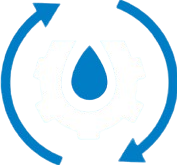
Methodological
approach
Two methodological approaches :
Understanding groundwater is key to sustainable and strategic resource management. To grasp the complexity and heterogeneity of aquifers, two areas are being studied :
Structure
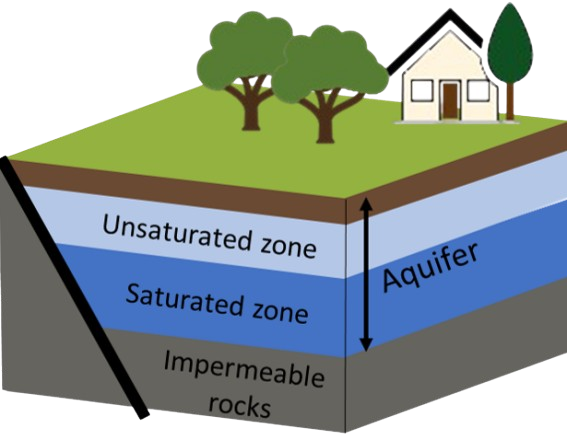
The structure of an aquifer concerns everything that is fixed. For example:
- The boundaries of the aquifer in the three dimensions of space,
- The most productive levels of the aquifer.
Functioning
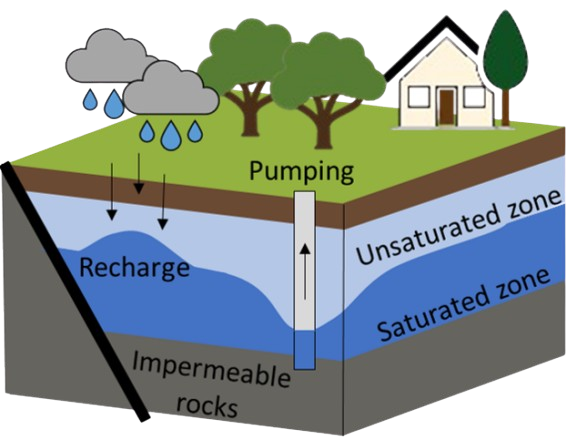
The functioning of an aquifer is dynamic and subject to change over time. Examples include:
- Changes in recharge,
- The influence of pumping.
A whole set of thools
The complexity of aquifers requires the combined use of a wide range of tools. These tools are constantly evolving with ongoing developments in sensor/measurement instrument technologies, data processing, and machine learning. Among these various tools are :
Artificial & natural tracing
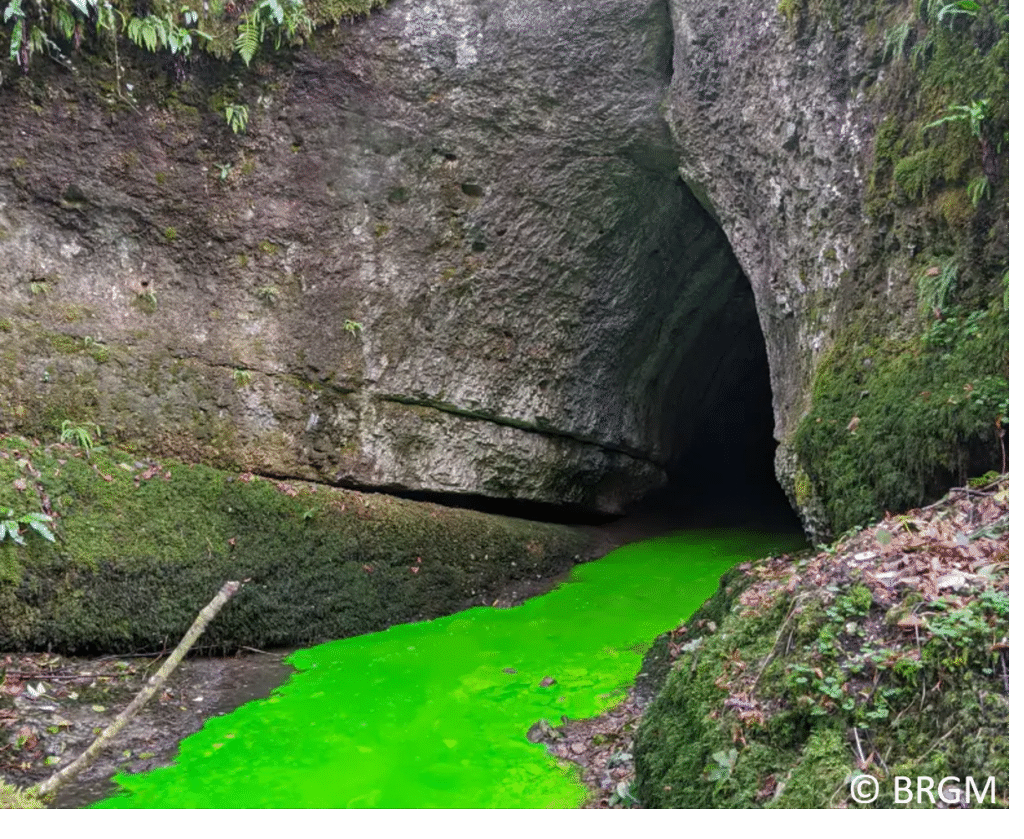
Tracing allows a direct connection between two or more points (mass transfer) to be identified.
Tracing is artificial when a dye is injected. The arrival of the dye is tracked at one or more points that are assumed to be connected to the injection point.
In natural tracing, we analyze what is already present in the water, whether it is a naturally occurring element (e.g., calcium, bicarbonate) or of anthropogenic origin (e.g., nitrates, pesticides).
Geophysics

When applied to groundwater, geophysics or hydrogeophysics can be used to image the subsurface in much the same way as an X-ray or ultrasound scan is used to image the human body. Electrical methods measure the resistivity of the subsoil, while electrical methods measure its conductivity. Since water is resistive and not very conductive, these methods can be used to identify the levels and depths where water is present in greater quantities.
Geological characterization
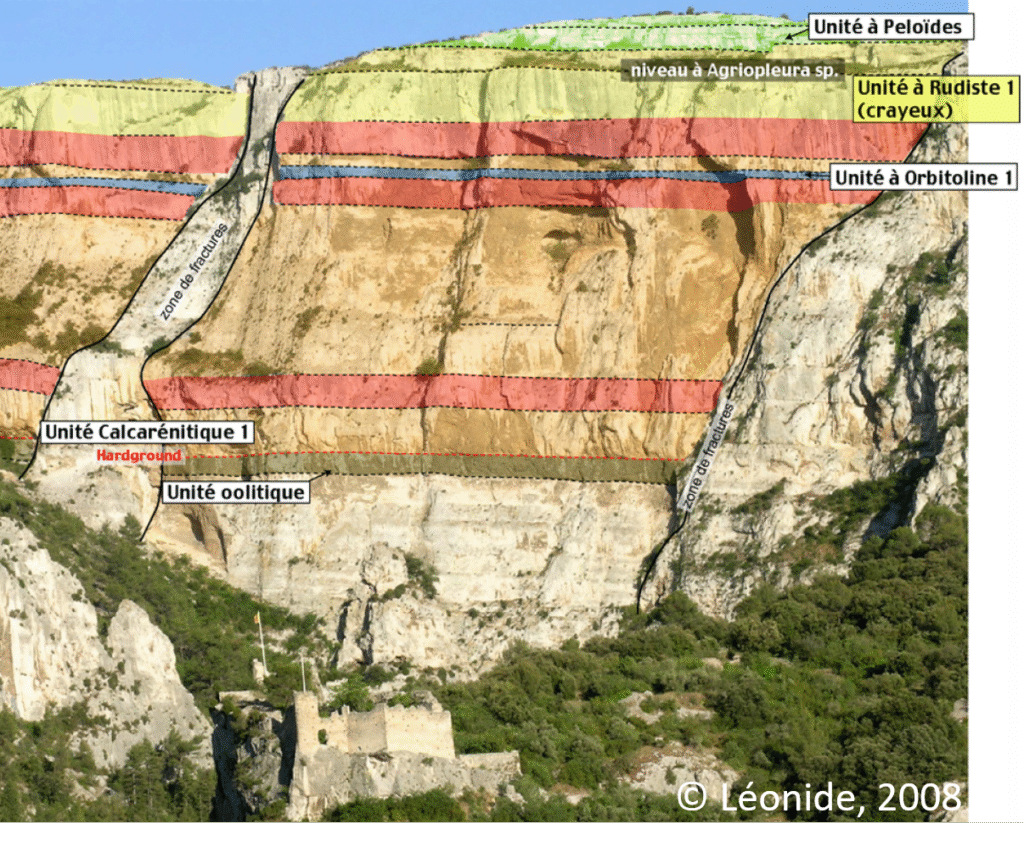
Geological characterization requires significant fieldwork. The first step is to identify the different types of rocks and the context of their formation (e.g., sedimentology), then to examine the deformations and alterations they have undergone (e.g., structural, tectonic, karstology). This knowledge must then be applied to groundwater, focusing on rocks and structures (e.g., faults) that are likely to allow water to pass through or, conversely, to act as a barrier to flow.
Workflow
The GeEAUde partnership chair has developed a methodological approach (workflow) tailored to current and future groundwater issues. Comprising four stages, this workflow highlights the importance of understanding aquifers, which is essential for developing strategies for adapting to global change and sustainable management.

Characterization
Characterization is an essential first step in understanding the structure and functioning of aquifers at different spatial scales (from the plot to the basin) and temporal scales (from the event to the hydrological cycle). It requires the use of a range of innovative tools that are constantly being optimized or developed.

Monitoring
Monitoring is an essential step in understanding how an aquifer functions over time. It requires adapting a set of tools so that they are optimized for the different spatial (from plot to basin) and temporal (from event to hydrological cycle) scales being studied.

Modeling
The results obtained from characterization and monitoring can be combined to design conceptual diagrams or numerical models of the structure and functioning of an aquifer. These models are designed to integrate all the processes that affect an aquifer in order to assess the influence of changes in one or more parameters on groundwater (e.g., land use, climate change).

Decision support tools and sustainable management strategies
The integration of the three previous actions can be combined with a detailed economic analysis to assess the impact of current and future groundwater exploitation, as well as to simulate and evaluate different management strategies using real-time data flows. The aim is to enable managers to make informed decisions regarding anthropogenic and natural pressures by adapting their strategies to ensure sustainable water resource management.

